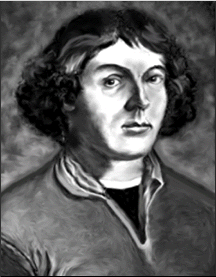Today is the birthday of Nicolas Copernicus. Copernicus, born in 1473, was the one who discovered the model of the solar system that explains the apparent retreats of the outer planets in their orbits
Tammy Plotner and Jeff Barber, Universe Today

Today is the birthday of Nicolas Copernicus. Copernicus, born in 1473, was the one who discovered the model of the solar system that explains the apparent retreats of the outer planets in their orbits. Imagine that all this happened over 530 years ago in an unenlightened time. Under these conditions, this thought was impressive. If you go outside later, you can see the crater named after him on the surface of the moon, almost in the center, west of the night line.
However, before the moon rises tonight, we will turn the telescope towards Saturn - one of the bodies in the solar system whose movements in the sky demonstrate what Copernicus hoped his perception could explain. Among the seven classical planets, Saturn moves at the slowest speed and takes almost two and a half years to travel the thirty degrees to each of the 12 "stations" in their orbit on the Milka plane.
Due to its slow pace, Saturn is identified with Chronos - the god of time, who reaps the grain with a sickle after the thirty years of a person's life.
The background for Saturn's current position is produced by the stars of the astrological group Cancer (they are of course not a group in reality), that is, one of the group on the zodiac or the wheel of animals, on the plane of Milka. Cancer precedes the neighboring group - Gemini, and comes after Leo - the lonely Lion.
By placing the sun at the center of the entire system, instead of the earth, Copernicus freed human thought from the ancient Ptolemaic system and allowed the celestial lion to stand at the center of the universe instead.
It is worth watching Saturn and the belt with few contrasts south of its equator, the mottled bluish color of the South Pole region, and the delicate system of the four satellites that can be seen moving much faster around Saturn than the planet itself orbits the Sun. Copernicus would probably have liked this sight very much, if he had not made all his discoveries before the invention of telescopes.
